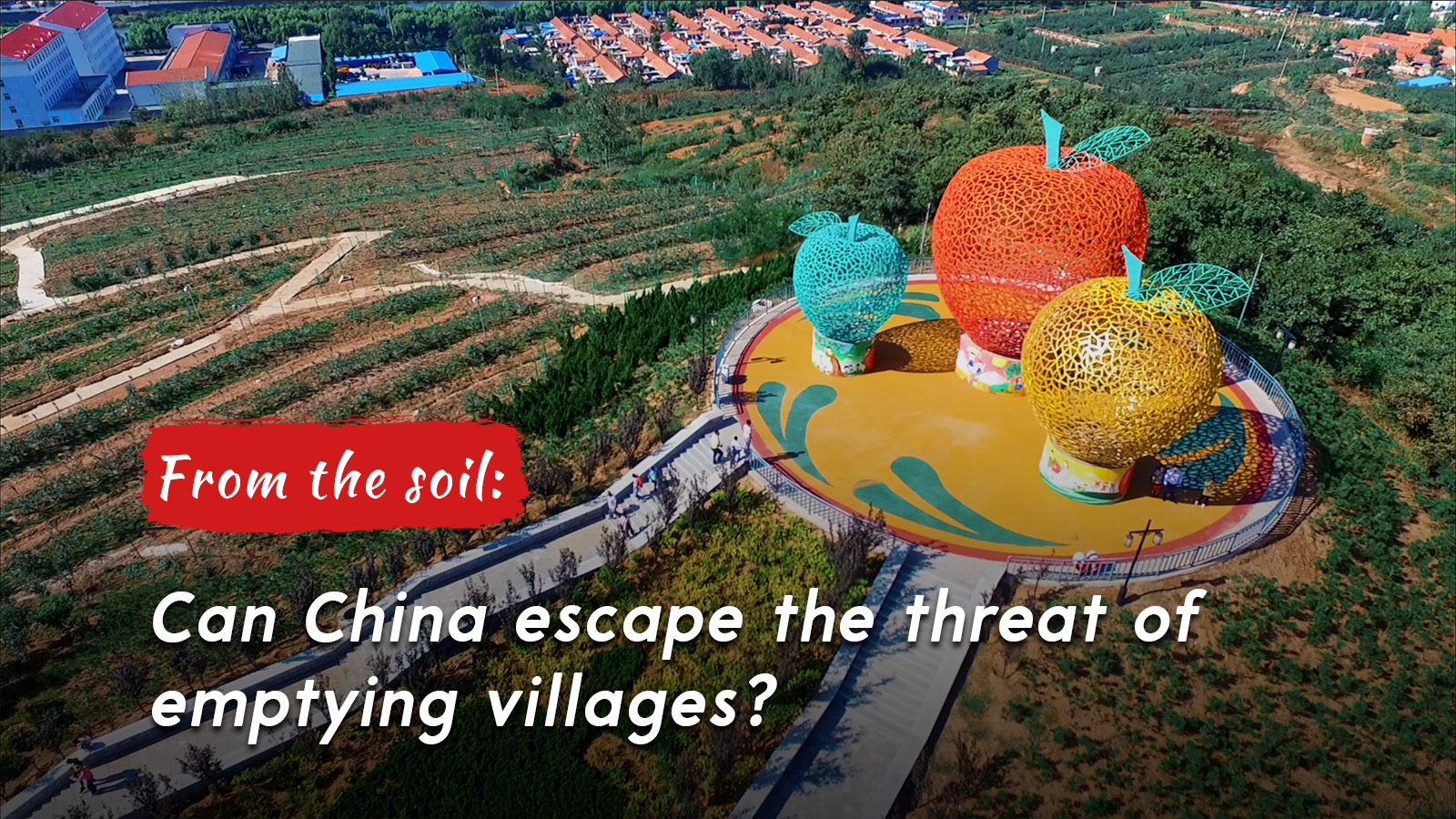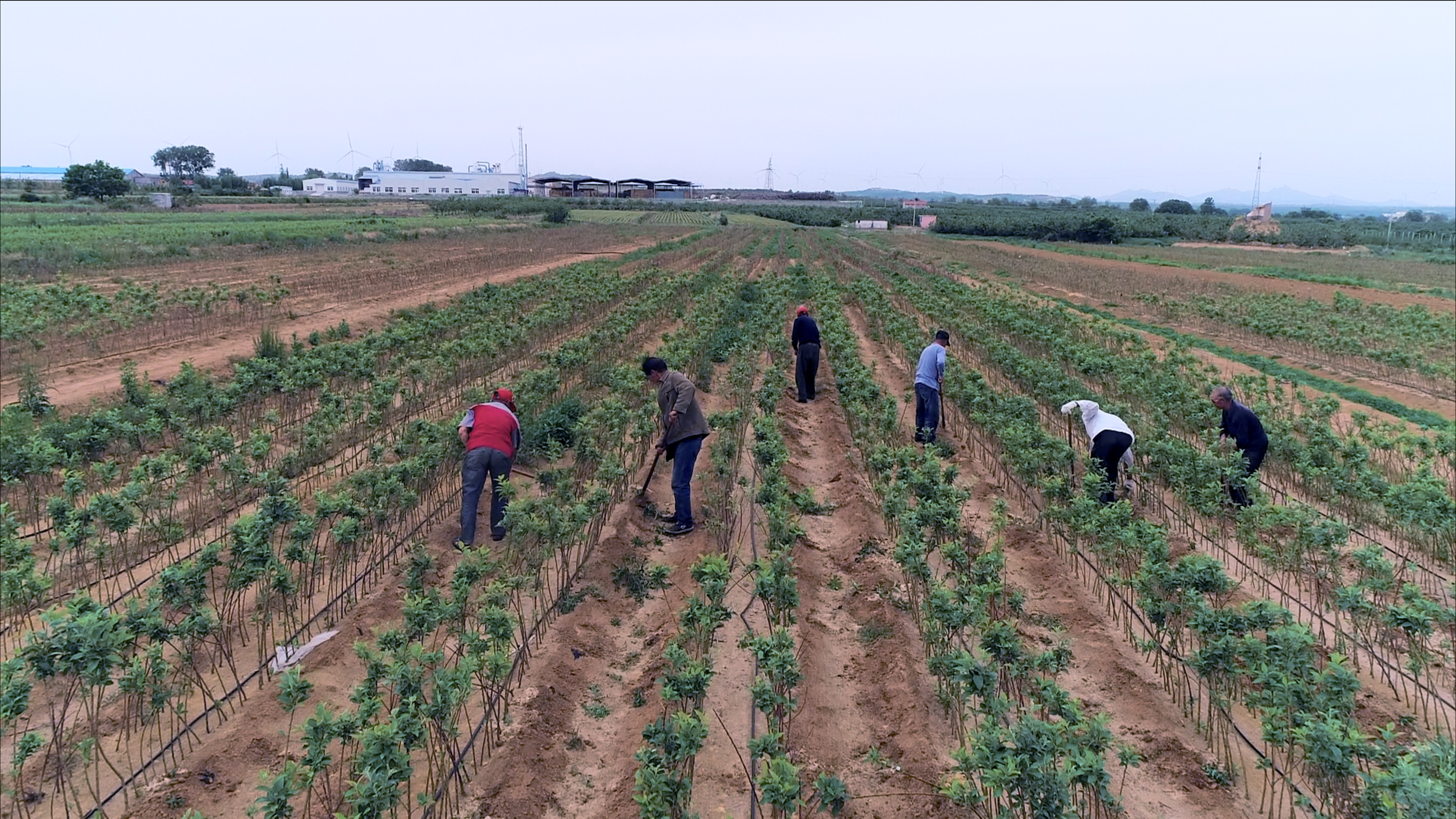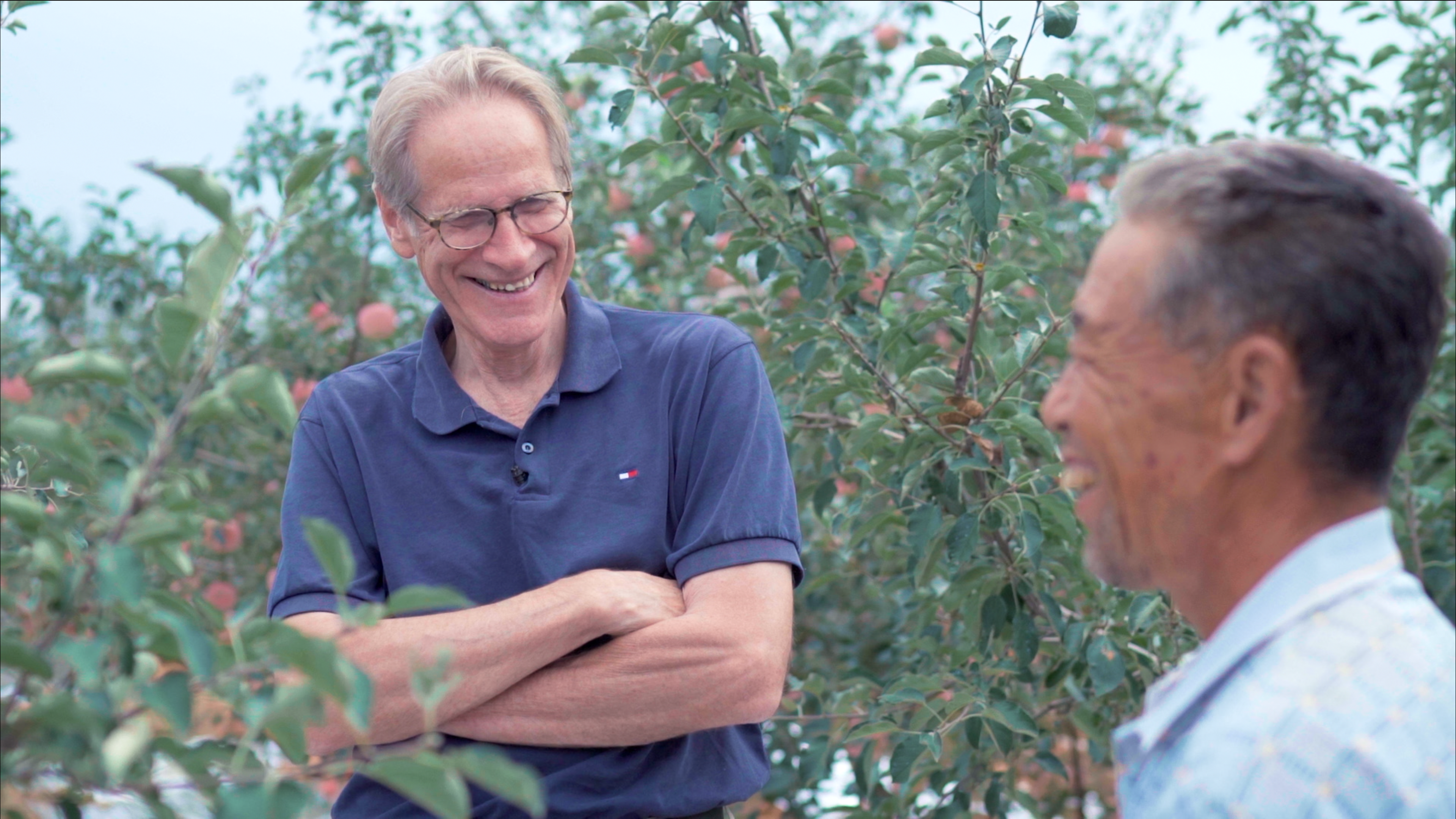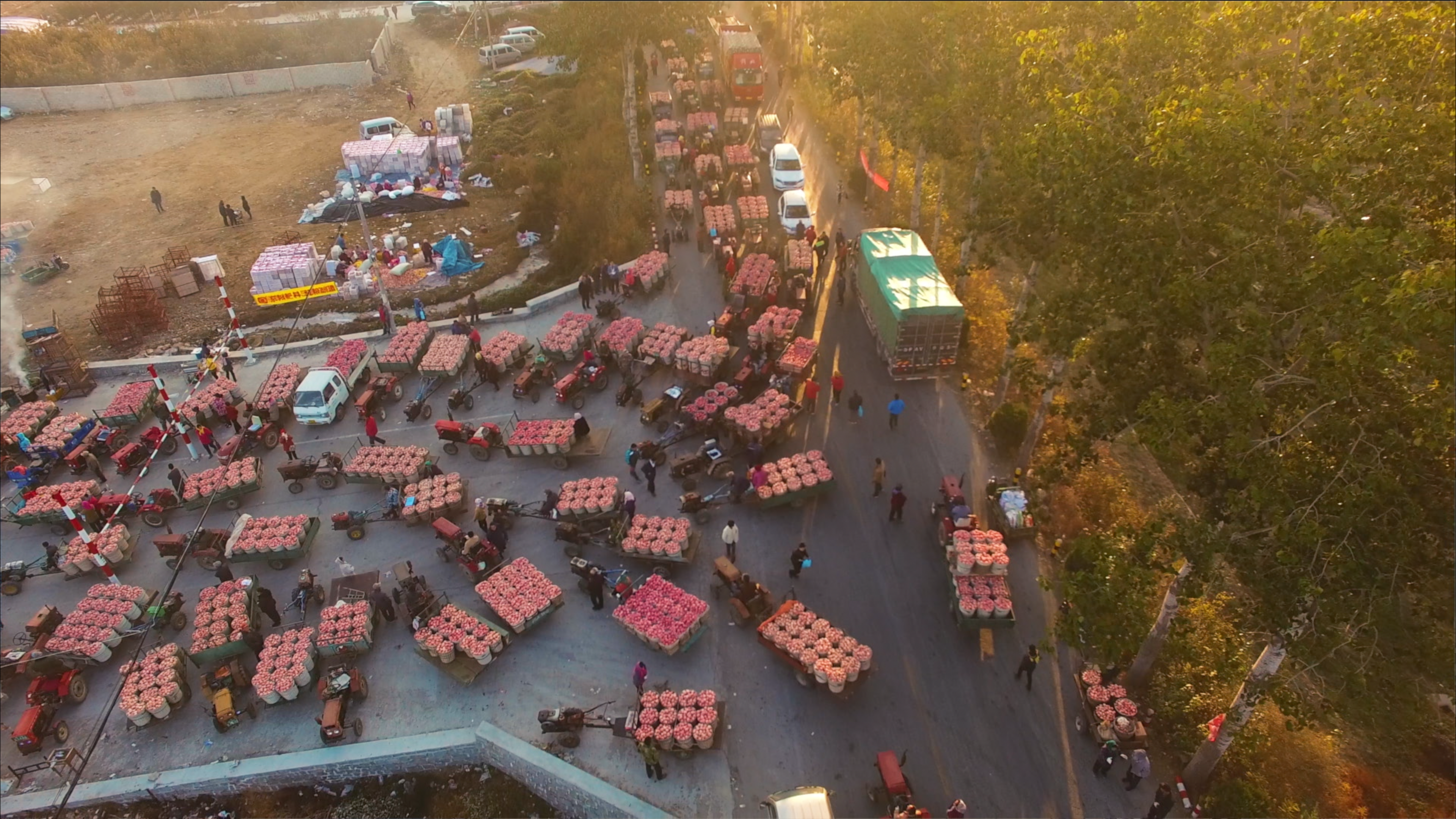13:34

Editor's note: Poverty reduction in rural areas has been enormously challenging worldwide, and China is no exception. In this five-episode video series "From the Soil," CGTN has invited development experts to make an on-the-spot investigation in China's rural regions to see China's ways to reduce poverty and examine whether they can shed light on the global poverty alleviation work. In the third episode, Tom Wolters, consultant of United Nations, heads to Qixia, a county-level city in eastern China's Shandong Province. The views expressed in the video are his own and not necessarily those of CGTN.
Qixia, a county-level city in eastern China's Shandong Province, is hailed as the home of apples in China. The city lies on a latitude of 37 degrees north, like other important natural production regions as Bordeaux and Sicily.
Qixia's hilly terrain and mild weather offer some of the best conditions for growing apples. That's why farmers in this region earned an enviable income at one time, but now they are under the same threat as other less developed regions around the world.
Global research has discovered a phenomenon called the "two agednesses and two weaknesses", an issue that's getting more prevalent, and Qixia is a typical example.
The "two agednesses" refer to aged people and aged trees. As younger generations move out of the villages, almost a third of the people left behind are the elderly above 60. In a decade, it may all boil down to the point where land is abundant but no body works it. At the same time, aged trees means that the quality of crops is declining sharply, together with a drop in both prices and yield.
The "two weaknesses" refer to the weaknesses of the collective economy and industrial development. Low levels of rural collective incomes have constrained the administrations' ability to provide better public services. At the same time, incapacity to upgrade industries means one can not expect a bright future. This has also mired down the process of orchard renovation. Outdated management and lack of partnerships have held back new technologies and new crops.
Overcoming these obstacles is the key to sustainable poverty alleviation in rural areas.
My name is Tom, I'm from Holland. I have a great interest in this subject as I worked in poverty alleviation with the United Nations Development Programme before retiring. Over the past three decades, I conducted research projects in 35 different countries and regions, and came to China to work in sustainable development since the 1990s. One of the remarkable achievements of China is that it has taken hundreds of millions of its citizens out of extreme poverty in the past three decades.
However, the aging population and empty village syndrome are not problems unique to China; they are irreversible trends globally. Against this backdrop, this country cannot afford to rest on its success. That's why I have come to find out how local communities are staving off the real threat of falling back into the poverty trap.
Qixia has 953 administrative villages, making it the largest county-level city under the jurisdiction of Yantai City in Shandong Province. With a large number of villages and high proportion of rural population, 80 percent of farmer's incomes here come from the fruit industry.

Farmers work in an apple orchard in Qixia. /Video screenshot
Farmers work in an apple orchard in Qixia. /Video screenshot
In the village of Beiluotang, where we are headed, there are 1,200 residents, but only 12, just a dozen, of working age are under the age of 45. In the fields, you'll see workers in their 50s, 60s and 70s. Although they earned a handsome income from apples, the traditionally good price they fetched is now under threat. One reason is that many of the orchards found in about 900 fruit-tree villages scattered in the hills are aging, and therefore no longer producing as much as they used to. Fruit quality has declined.
But planting new trees is not the easy solution that it may at first appear. I am with Mr. Yang in his one-acre apple orchard. He decided to do some replanting 10 years ago but it took three to four years before he was able to earn any money from the new crop. So, one can see why farmers are reluctant to change their methods, even though it is in their best interests.
The lack of a modern irrigation system in an area with water shortage is also a major handicap.
"Do they get enough water all the time?" I asked Mr. Yang after I saw that the trees had been irrigated.
"We need to buy water," Mr. Yang replied.
"How do you bring the water to the trees?" I further inquired.
"By flooding," he said, as the water source is at a higher elevation.
It's hard work, and they're old. I can imagine as I am not young either. This year, Mr. Yang also introduced a new apple variety with smaller trees, so the fruit can be more easily picked. Around 140 of these small trees can now be planted per acre, instead of 40 or so of the taller ones. This means greater yields. It also means more labor and a wait of up to four years for them to bear fruit. To supplement his family income during the transition, Mr. Yang has planted peanuts between the apple trees.

UN consultant Tom Wolters talks with Mr. Yang, a local farmer, in his orchard. /Video screenshot
UN consultant Tom Wolters talks with Mr. Yang, a local farmer, in his orchard. /Video screenshot
Mr. Yang told me that he's 60 years old, and he's going to work for another 10 years. He's sure he will transfer the land to the cooperative if he can't manage to work in the orchard anymore. Mr. Yang clearly sees the farming community's cooperative as a safety net. We shall discuss more about the importance of this type of partnership to the industry later.
But first, let's get back to the village, as it's lunchtime. We are here in Beiluotang village, and I've joined the Li family. Mr. Li is 75 years old and Mrs. Li is "almost" 75 years old, and we are on the way to the dining hall.
The canteen is for residents aged 70 and above. It is heavily subsidized by contributions from the cooperative village enterprise as well as the children of the elderly. Meals are free for those who are unable to pay.
It is a community-driven anti-poverty experiment based on the model known as "Party-led cooperatives, enterprises and public welfare." The Communist Party of China has always seen the cooperative movement as integral to rural development. The collective income of the Beiluotang cooperative supplements the role of the state pension in the old rural system.
So, where does collective income come from? After a great lunch, let's visit an agricultural cooperative to find out more.

UN consultant Tom Wolters chats with an old man in the canteen. /Video screenshot
UN consultant Tom Wolters chats with an old man in the canteen. /Video screenshot
I am here at a National Industrial Park, a Party-led cooperative apple farm in Hanqiao Village, which is quite similar to Beiluotang. It has more than 1,600 inhabitants, only 200 of whom are under the age of 70.
Next to me is Mr. Liu, the manager. Here, the orchards are modern, well-managed, irrigated, more productive and less labor-intensive. Farmers lease their land to cooperatives, each get 20 percent of yield relative to the size of their land, so it is an attractive option and they can earn additional income as workers in the orchards of the cooperative.
The success of the park led to Hanqiao's removal from the list of villages listed as poverty-stricken. This cooperative model is very promising on two counts: It offers a solution to the problem of aging farmers, and it transforms declining old orchards into high production parks. According to Mr. Liu's calculations, a 10-percent dividend for the 20 or so acres of collective land here will bring 3 million yuan, about half a million dollars, to Hanqiao Village.
The village, however, has to play second fiddle to Guandao Town in Qixia Economic Development Zone which has a larger industrial park, which because of its size, can accelerate complete mechanization, and the scaled-up industrial park model can quicken the pace of mechanization.
What's more, new farmers, professionally educated, are taking up jobs. A career in modern agriculture has become more appealing to the younger generation.
Guandao can inspire other areas to take up the Party-led cooperative model and escape the poverty trap for good. The government helps to provide goods and services necessary to move apples from the farm to the consumer, ranging from production, packaging, warehousing, transport and food processing to marketing.
We are now in Dongbeiqiao Village in the suburbs of the expanding Qixia. It's typical of an outskirt area, straddling urban and rural life.
The cooperative here is trying an innovative approach that takes advantage of its suburban location. It specializes in what's called the ecological circular farming combining higher value fruits, such as strawberries, cherries, as well as insects and other products targeted at urban consumers and tourists. This has led the villagers to higher incomes and inspired ideas on diversified agricultural management.
I asked the reason he came back from Beijing and became the first manager ever in his hometown. He said that the development of China has already been on a fast track. Considering both of the huge population bases and the greatest untapped market potential in the village, startups like his are in a better business environment, which is also my biggest motivation as well to come back.
From Dongbeiqiao Village which is lucky enough to lean on urban resources, we are now going high up in the mountains to Yijia Village, where difficult access, water scarcity and low soil fertility make it very hard to reduce poverty.
To overcome the tough natural conditions, Yijia's village cooperative came up with a credit system, where labor earns points and points coupons are exchanged for shares. Because of the incentives, the 30 or so elderly farmers have worked hard to build roads and irrigation facilities.

An aerial view of an apple market in Qixia. /Video screenshot
An aerial view of an apple market in Qixia. /Video screenshot
Economies across Asia and the Pacific have been hit by a shrinking workforce. Governments in these countries must encourage older people and women to work and join the workforce, although at this point, it is not clear whether these policies are effective. The Party-led cooperative of Yijia Village sets a positive example.
Farmers grow cherries on the hillside and raise Tibetan pigs. They are looking forward to the harvest season.
We came here to understand how Qixia is coping with the threat of poverty brought by an aging population, a lack of labor and the decline in apple quality. And what did we learn?
In China, the household responsibility contract system and rural tax exemptions once brought unprecedented enthusiasm to farmers and played an important role in alleviating rural poverty.
But in the 40 years of reform and opening-up, the urbanization trend of the rural population has also brought a hidden danger: What happens when villages become just shells of their original selves?
Many governments around the world face the challenge of a quickly aging population and the need to provide for a sustainable pension system, which means higher government expenditure. That's why Japan has already gradually hiked sales taxes, which shifts the burden onto the average citizens.
Qixia's method of Party-led cooperatives tries to bring in more collective income to boost fund reserves needed for public spending. This overcomes the problem of low rural tax revenues.
In the past three years, almost 700 villages in Qixia have set up cooperatives, almost three quarters of the county. The 47,000 households involved have made an extra 360 million yuan in incomes, while the village's collective income has grown by 270 million yuan.
China's rural living has always been reliant on the moods of mother nature. To me, Qixia has been able to change that by diversifying the rural income streams and smoothed the volatility in produce prices. Farmer incomes now come from four sources: land for equity, working at the cooperative, dividends from fruit harvest, and incomes from fruit processing and rural tourism.
So, that is probably a good message for the continuing and rising prosperity of this apple county.
The cooperative works to link the fragmented land plots, the separate farmers, and also agricultural businesses. It is a model that integrates the primary, secondary and tertiary sectors. That's what's going to bring renewed vigor to China's rural areas.
General directors: Mei Yan, Luo Qing, Bi Jianlu
Production manager: Lan Zhe
Scriptwriter: Tom Wolters
Story editor: Qing He, Chen Le
Cameramen: Chen Tianyu, Song Xiaopeng
Video editing: Hu Menglong
Managing producer: Jiao Zhe
Art directors: Hu Dacheng, Kong Qinjing
Executive producer: Bi Jianlu
Supervisor: Mei Yan
(If you want to contribute and have specific expertise, please contact us at opinions@cgtn.com.)